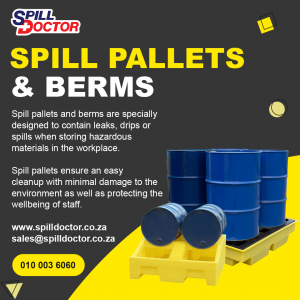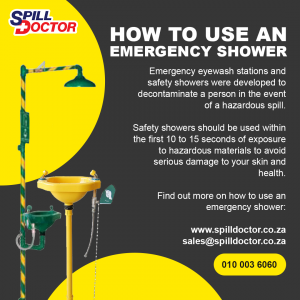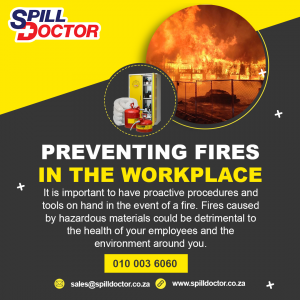What is the Occupational Health & Safety Act?
The Occupational Health & Safety Act (OHS Act) was designed to ensure safety procedures and systems are implemented and followed in the workplace. The OHS Act protects employees by providing legal protection against a work environment that doesn’t follow the legislation. Without the OHS Act, employers could become lazy when implementing health and safety procedures which could lead to the workplace becoming a dangerous working environment.
The following will outline why the Occupation Health & Safety Act is important for employers, employees and people working in health and safety industries.
According to the OHS Act, its purpose is to:
- Protect the health and safety of persons working with equipment, machinery or hazardous materials
- Protect external persons against hazards to health and safety arising out of or in connection to activities that may take place in a work environment
- Establish an advisory council for occupational health & safety and provide for matters connected herewith
The sole purpose of the act is to protect employees from factors that may cause risk to their health and safety, as well as external people who may be exposed to dangerous activities and environments generated by a company (customers or people near the workplace). Employers must ensure they adhere to the procedures and requirements stipulated in the OHS Act. Any company with 20 or more employees are required to work in conjunction with a health and safety committee. The health and safety committee are tasked with identifying potential health risks. The Committee usually examine workplace incidents and investigates any complaints made by employees or external persons.
The Act also protects employers by requiring employees to take reasonable care of their health and safety as well as others while at work. It motivates employees to report any incidents or risks that an employer may not know about.
Why is the OHS Act Important?
The Act was put in place to ensure the safety of workers and the environment throughout the country. The act establishes procedures that enforce safe, productive and healthy work environments for every employee. The Act protects all persons involved in a company, from the employer to employees and customers exposed to the workplace.
Employees –
The Act gives employees the right to a safe work environment and a platform to report any misconduct or negligence in the workplace. Employees who know the conditions of the Act can identify health and safety risks and report them to the relevant authorities. As an employee, it is your responsibility to ensure that safety practices are maintained and followed by yourself and your fellow workers. Not following health and safety requirements could result in a fine or imprisonment if you are found responsible for the damage.
Employer –
The protection of employees and their families’ welfare should be the number one priority for all employers. Ensuring the health and safety of all workers also improves productivity in the workplace as fewer employees will be injured or fall ill. Should an employee be injured or harmed by an employer not upholding the act, they may face hefty fines or imprisonment if found guilty. Health and safety inspections happen randomly and are there to ensure that employers enforce workplace health and safety measures. Failing to adhere to the Act or not passing the inspection could result in your business temporarily closing until the correct procedures have been enforced.
How Can Employers Ensure a Safe Work Environment:
The Occupational Health & Safety Act requires employers to take responsibility for providing a safe working environment to their employees. Employers must evaluate working areas and conduct risk assessments and inspections to ensure safety measures or being adhered to. The Act also directs employers to provide preventative health and safety measures and reactive solutions in the event of an incident.
Informing Your Employees:
It is vital to explain the Occupational Health & Safety Act to employees to ensure they thoroughly understand the potential risks and hazards that may be present in the workplace. It is the employer’s responsibility to provide knowledge about OHS Act and the security measures in place to their employees. Uninformed employees won’t know what procedures to follow or the role they need to play to ensure a safe work environment for all. Not communicating this with your employees could result in failed inspections, fines, or even harm to workers or the environment.
Report Incidents or Accidents:
It is the employer’s duty to notify the Department of Labour if an employee becomes injured or falls ill. Any high-risk incidents that could be detrimental to employees, people in the area or the environment (such as chemical spills or fires), should also be reported. An investigation will be conducted to investigate the incident and to decide whether the employer and employees had followed the regulations stipulated in the OHS Act. If it is concluded that negligence and not following the proper procedures were the cause of the incident, the employer or employee will be held responsible for their actions.
How Can Employees Ensure a Safe Work Environment:
Employees are responsible for their own health and safety and should follow the procedures and systems put in place for maximum protection. It is also their responsibility to report malfunctioning systems or other employees who may not be following the regulations. The OHS Act provides four basic rights for employees:
- The right to participate in health and safety regulations
- The right to know the health and safety hazards in the workplace
- The right to refuse work if health and safety procedures aren’t in place
- The right to raise OHS concerns with no retaliation
In Conclusion, the Occupational Health and Safety Act was put in place to protect all those who are present in the workplace and it is the responsibility of all to implement and follow the correct procedures for maximum welfare. Not following the regulations provided in the OHS Act could result in damage to an employee’s well-being or the environment around your premises.














